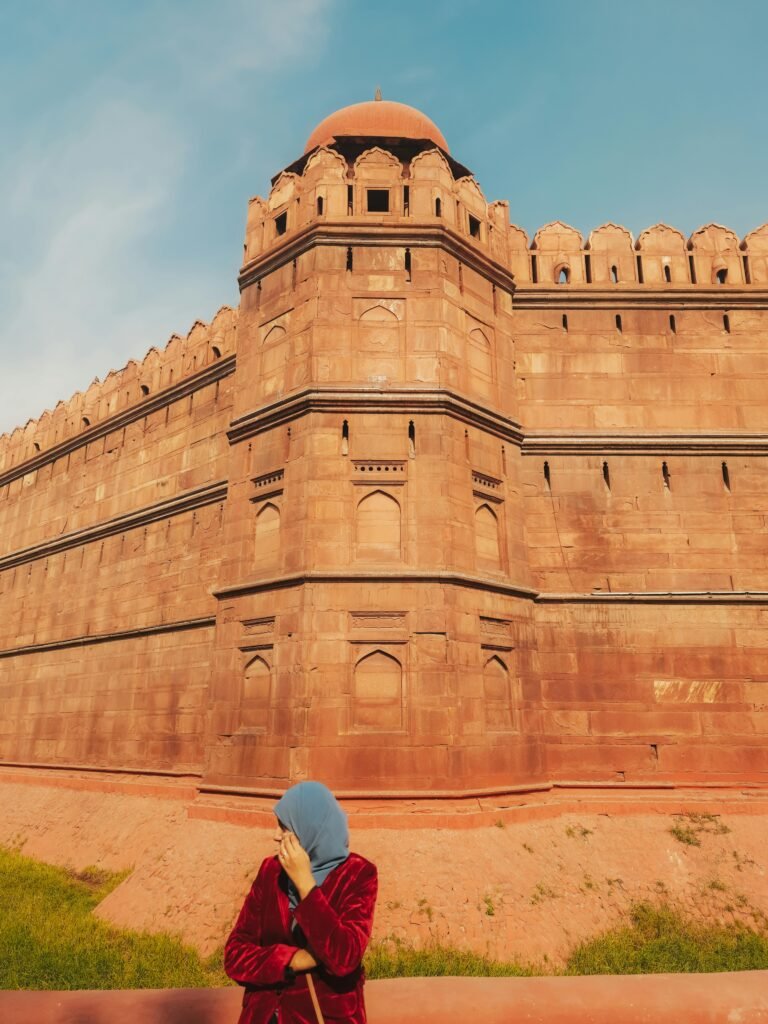Standing majestically in the heart of Old Delhi, the Red Fort, or Lal Qila, is more than just a fortress; it is a colossal testament to India’s rich imperial history, a symbol of its enduring sovereignty, and a vibrant canvas displaying the zenith of Mughal architectural prowess. Its imposing red sandstone walls, stretching for over two kilometers, enclose a sprawling complex of palaces, halls, mosques, and gardens that once served as the glorious seat of the Mughal Empire.
The story of the Red Fort begins with Emperor Shah Jahan, the very same visionary who gifted the world the ethereal Taj Mahal. In 1639, Shah Jahan decided to shift his capital from Agra to a new city, Shahjahanabad (now Old Delhi), and embarked on the construction of this magnificent fort, which took nearly a decade to complete, officially opening its gates in 1648. Designed by Ustad Ahmad Lahori, the chief architect of the Taj Mahal, the Red Fort was conceived not just as a defensive stronghold, but as a regal city within a city, reflecting the unparalleled grandeur and power of the Mughal dynasty.
Architecturally, the Red Fort is a dazzling fusion of Persian, Timurid, and traditional Indian styles. Its most striking feature is, of course, its distinctive red sandstone construction, which gives the fort its iconic name. The massive Lahori Gate and Delhi Gate serve as grand entrances, leading visitors into a world of intricate design and historical echoes.
Within its fortified walls, the Red Fort houses a series of exquisite structures, each telling a tale of imperial life:
- Diwan-i-Aam (Hall of Public Audience): Where the Emperor would address the common people, dispense justice, and receive petitions. Its elaborately carved pillars and grand scale speak to the public aspect of Mughal rule.
- Diwan-i-Khas (Hall of Private Audience): An opulent chamber where the Emperor would hold private meetings with nobles and dignitaries. Once home to the legendary Peacock Throne, encrusted with precious jewels, this hall exemplifies the peak of Mughal luxury and artistry, featuring stunning marble work and intricate pietra dura inlay.
- Rang Mahal (Palace of Colors): The royal women’s residence, known for its vibrantly painted interiors, elaborate mirror work, and the “Nahr-i-Behisht” (Stream of Paradise) – a canal that ran through its core, providing natural cooling.
- Moti Masjid (Pearl Mosque): A small, pristine white marble mosque built by Aurangzeb, Shah Jahan’s son, known for its delicate architecture and serene beauty.
- Other significant structures include the Naubat Khana (Drum House), Mumtaz Mahal, Khas Mahal, and the beautiful Hayat Bakhsh Bagh (Life-Bestowing Garden), though much of its original splendor is now gone.
Beyond its architectural marvels, the Red Fort holds immense symbolic significance for modern India. It was from the ramparts of the Red Fort that India’s first Prime Minister, Jawaharlal Nehru, unfurled the national flag on August 15, 1947, marking India’s independence from British rule. Since then, every year on Independence Day, the Prime Minister of India hoists the national flag here and addresses the nation, solidifying its status as a powerful emblem of national pride and sovereignty.
Designated a UNESCO World Heritage Site, the Red Fort is not merely a historical relic; it is a living monument that continues to narrate the saga of a powerful empire and a nation’s journey to freedom. Visiting the Red Fort is stepping into a bygone era, allowing one to glimpse the sophisticated artistry, administrative prowess, and cultural richness that defined India when it stood as a global superpower. It remains an unparalleled testament to India’s profound legacy, a vibrant reminder of its past glory, and a cornerstone of its national identity.

